Skip to comments.
Nestorian stone tablet traces early Christianity in China
CGTN ^
| 19 May 2019
| Meng Qingsheng, Li Yang
Posted on 08/02/2019 4:16:55 AM PDT by Cronos
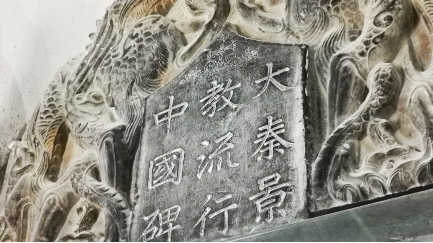 When did Christianity first appear in China? Well, you may come across a much reasonable answer by examining the over 4,000 stone tablets at Xi'an Beilin Museum, or Stele Forest, located in northwest China's Shaanxi Province.
When did Christianity first appear in China? Well, you may come across a much reasonable answer by examining the over 4,000 stone tablets at Xi'an Beilin Museum, or Stele Forest, located in northwest China's Shaanxi Province.
A much-justified answer to that question is in 635 AD during the early Tang Dynasty (618–907), the time of which was inscribed on the world famous Nestorian Stele, a 279-centimeter tall limestone block.
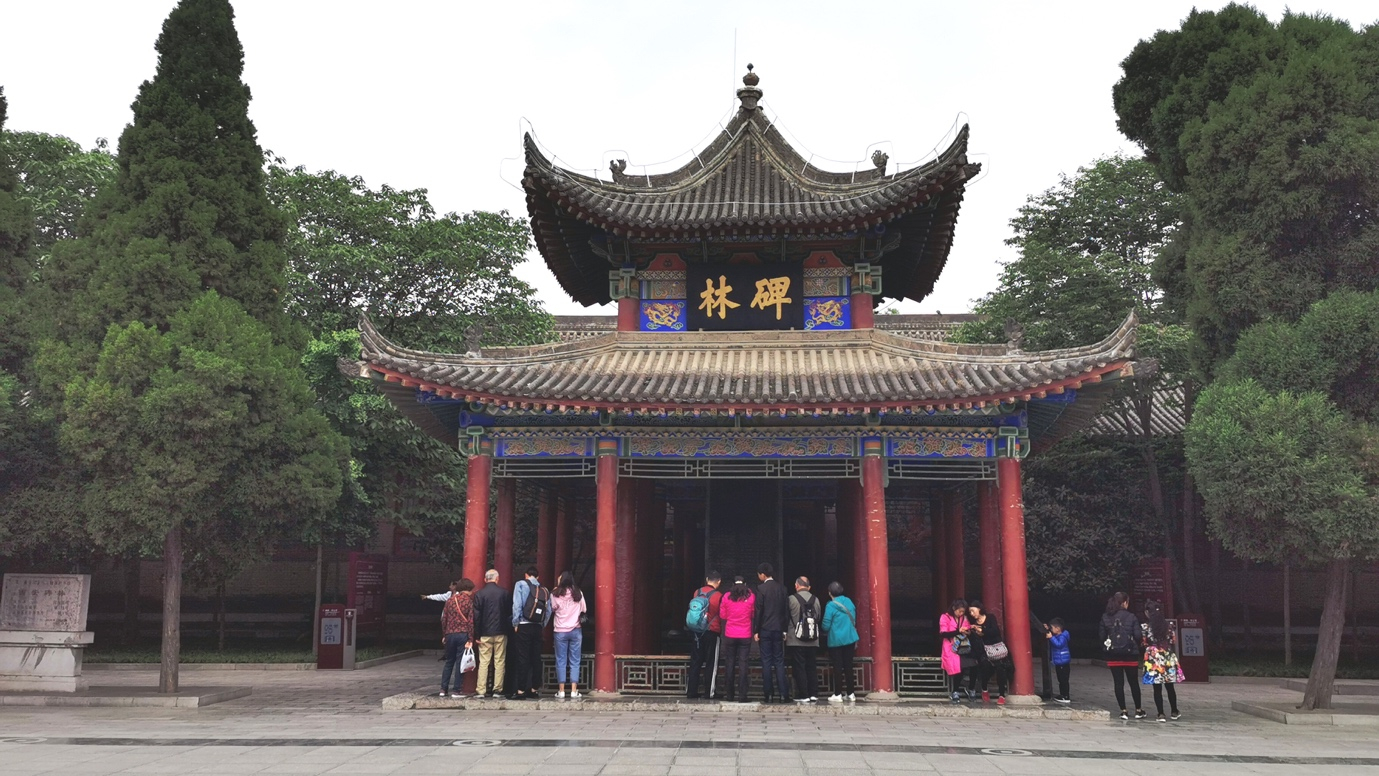
Xi'an Beilin Museum, established in 1087, houses the highest number of stone tablets in China. /CGTN Photo
Xi'an Beilin Museum, established in 1087, houses the highest number of stone tablets in China. /CGTN Photo
It's the monument that helps unravel some of the mysteries regarding Christianity and its less influential branch, Nestorianism (Jingjiao in Chinese or the Luminous Religion), which stresses the independence of the divine and human natures of Christ.
In modern times, Nestorians are represented by the Church of the East, or Persian Church usually referred to in the West as the Assyrian, or Nestorian, Church. Most of its members - numbering about 170,000 - live in Iraq, Syria and Iran.
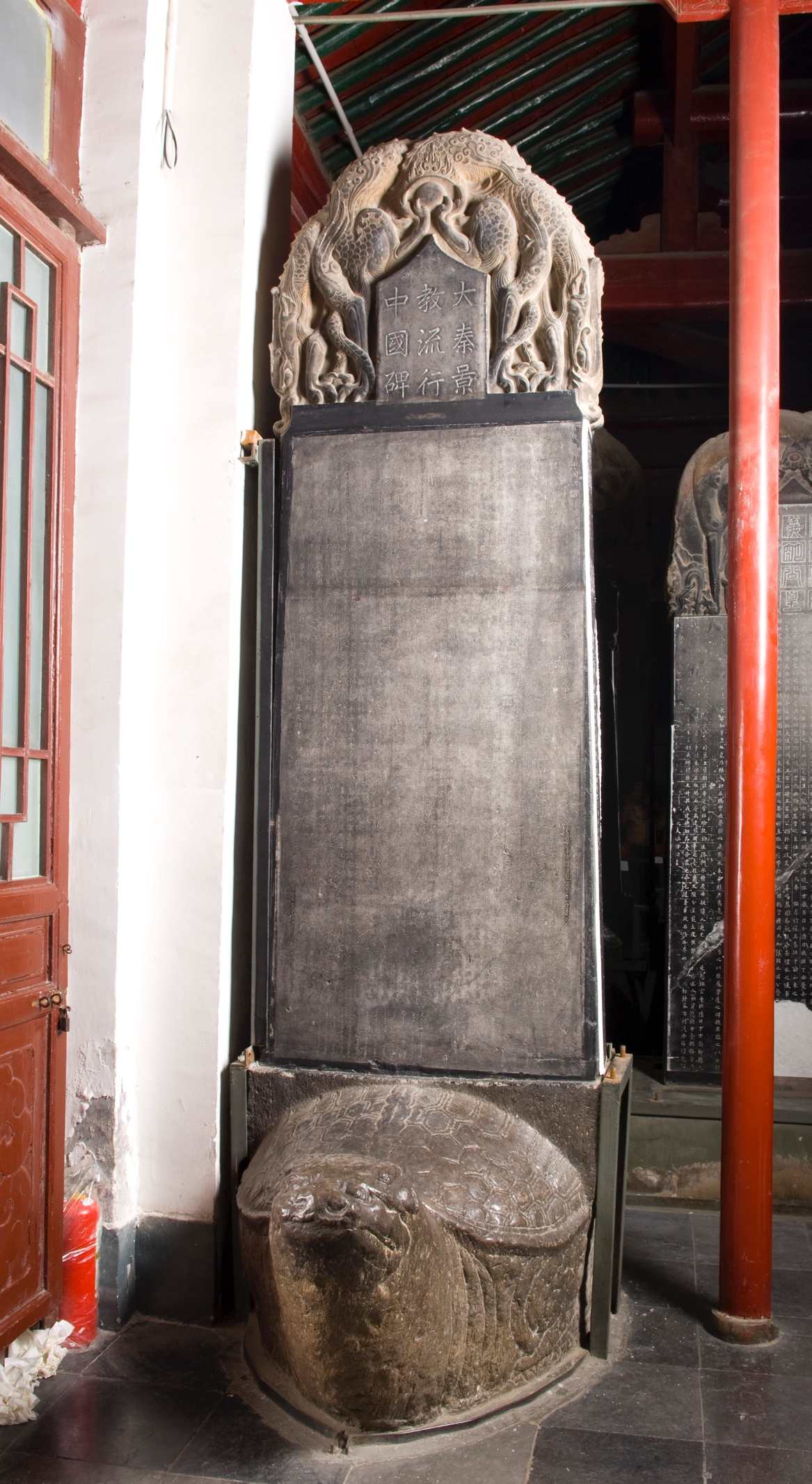
The Nestorian Stele documents a nearly 150-year history of Christianity in China's Tang Dynasty. /Photo courtesy of Xi'an Beilin Museum
The Nestorian Stele documents a nearly 150-year history of Christianity in China's Tang Dynasty. /Photo courtesy of Xi'an Beilin Museum
In a sense, the Nestorian Stele epitomizes flourishing cultural exchanges in ancient time between China and Asian countries.
Based on the texts written in Chinese and Syriac, an ancient version of the Syrian language, those countries were referred to as Daqin, denoting the Byzantine Empire, or Eastern Roman Empire (395–1453), as held by mainstream scholars in China.
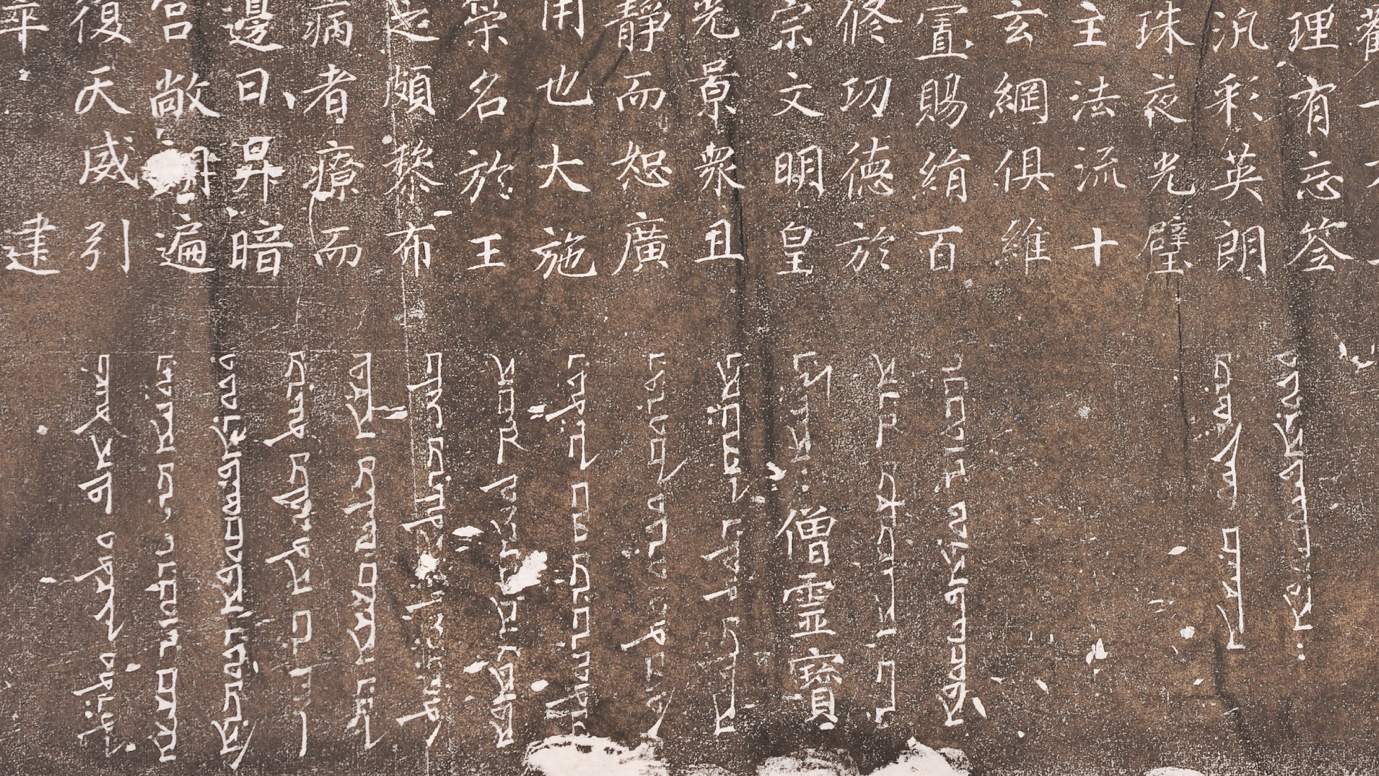
Syriac, the ancient Syrian language, on the bottom of the stele, explains the names of missionaries and local landscapes. /Photo courtesy of Xi'an Beilin Museum
Syriac, the ancient Syrian language, on the bottom of the stele, explains the names of missionaries and local landscapes. /Photo courtesy of Xi'an Beilin Museum
The stone tablet carries about 2,000 Chinese characters in total. Based on it, in the year 635, a man named Alopen came to the City of Chang'an, the capital of Tang Dynasty, along with his fellow Syriac missionaries. Emperor Taizong of Tang sent his chancellor Fang Xuanling and other officials to welcome their arrival.
It seems Nestorianism was well-received, as soon, there were churches set up across the Tang territory. In addition, the tablet serves as a concrete proof to China's earliest celebrations of Christmas, during which it says the emperor of the time held special rituals and shared the delicious food to people who believed in Christianity.
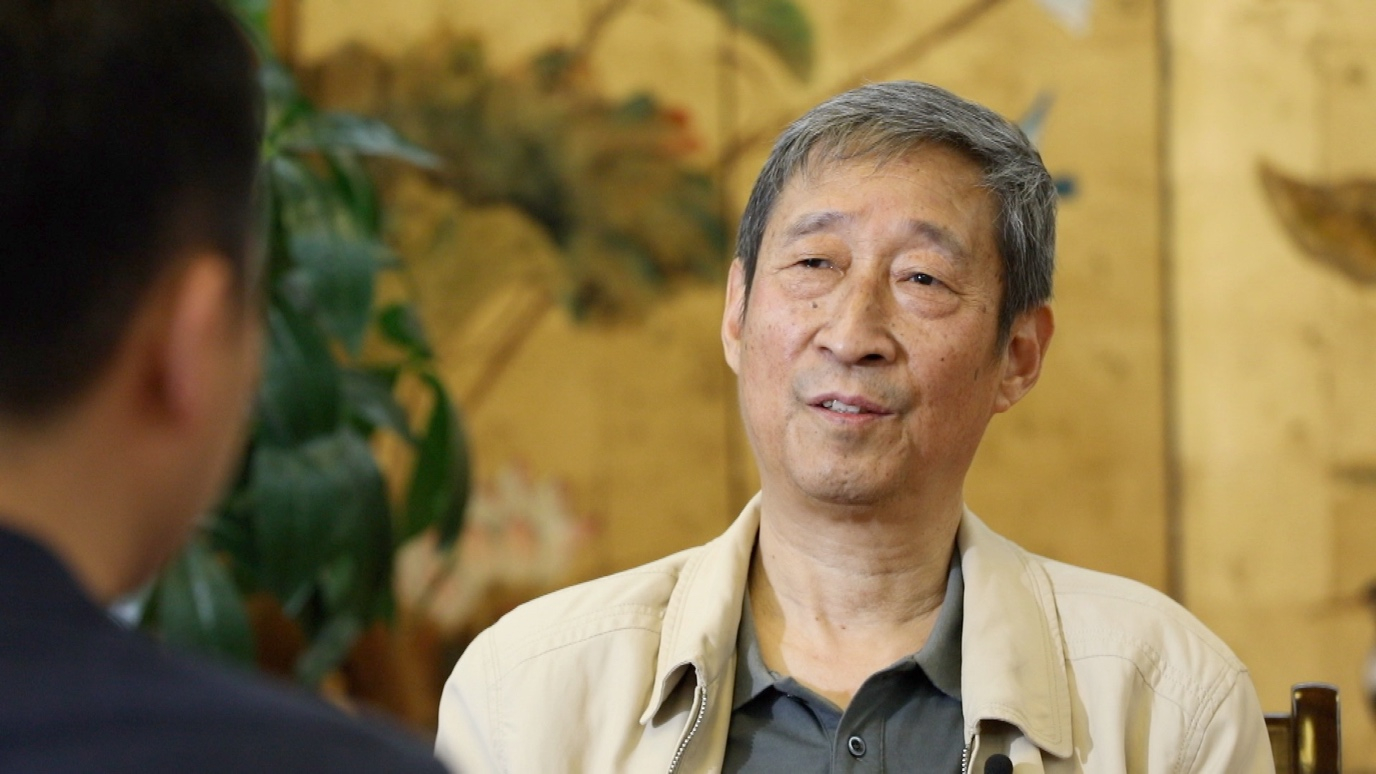
Lu Yuan is a research fellow retired from Xi'an Beilin Museum about ten years ago. He is the author of several books on the Nestorian Stele and China's stone tablets. /CGTN Photo
Lu Yuan is a research fellow retired from Xi'an Beilin Museum about ten years ago. He is the author of several books on the Nestorian Stele and China's stone tablets. /CGTN Photo
Lu Yuan is a retired research fellow at Xi'an Beilin Museum. After working there for more than 30 years, he spent more than two years working out a 260,000-character book explaining Nestorianism in China and the Nestorian Stele. He thinks highly of the stele's significance to both the general public and academicians in evaluating the presence of Christianity in ancient China.
In his book, published in May 2009, Lu quoted Frits Holm, a Danish scholar and adventurer who came to Xi'an in 1907, and attempted but failed to take the monument to Europe, by saying that the Nestorian Stele ranks on top of the four most famous stone tablets of the world, with the other three being the Rosetta Stone of Egypt, the Mesha Stele of Jordan, and the Aztec Sun Stone of Mexico.
Lu told CGTN in an interview that when different cultures and traditions meet, they clash with each other, and then integrate, the pattern of which conforms to the trajectories of human history. In his perspective, this best explains the prevalence of Christianity in ancient China.
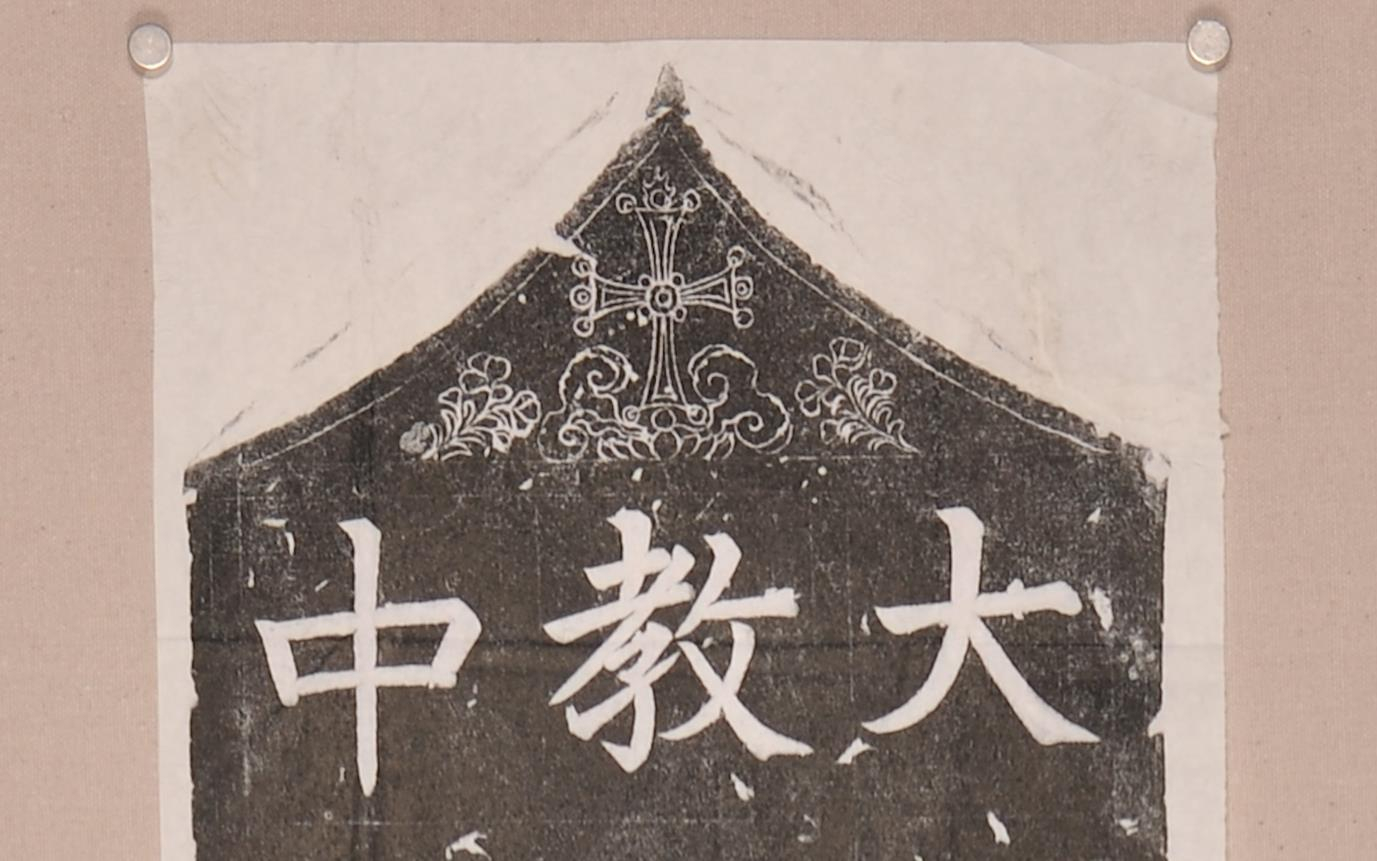
A close-up view of the unique pattern of Nestorianism on an ink rubbing version of the Nestorian Stele. /Photo courtesy of Xi'an Beilin Museum
A close-up view of the unique pattern of Nestorianism on an ink rubbing version of the Nestorian Stele. /Photo courtesy of Xi'an Beilin Museum
Echoing Lu's words, Will Chen, a museum educator working at the same Beilin Museum, explains an underlying meaning of a unique pattern on top of the tablet, which is formed by a cross, a lotus, and auspicious clouds. According to Chen, these three elements reflect the inclusion of local cultures of Buddhism and Taoism of ancient China into Christianity.
As the stone tablet was erected in 781, it sheds much light to a nearly 150-year development of Christianity in the Tang Dynasty, since Alopen came to China in 635. During an era of religious suppression by subsequent Tang emperors, the monument was buried in the year 845.
It was only rediscovered in 1625 during the Ming Dynasty. Then in 2002, considering its cultural and historical values, China decided to prohibit the famous stone tablet from attending any overseas exhibitions.
TOPICS: Catholic; General Discusssion; History
KEYWORDS: assyrian; china; epigraphyandlanguage; godsgravesglyphs; nestorian; nestoriancross; nestorians
The Ancient Church of the East - under Persian rule extended from Iraq to Mongolia/China and to India -- in the 10th century fully 1/3rd of all Christians were under the wings of the Catholicos of Ctesiphon (the "Pope" of the Church of the East)
They were mostly slaughtered by the Muslim hordes of Timur-e-Lang (Tamerlane) by the 13th century
1
posted on
08/02/2019 4:16:55 AM PDT
by
Cronos
To: Cronos
There are some who think the Wise Men were Chinese, based on the idea that it took them two years to arrive in Bethlehem (the same amount of time it would take to follow the Silk Road to the West).
To: CondorFlight
Fascinating! I've heard there are traces of Christianity at various points along the Silk Road, as commercial travelers spread Christianity as far as Western China. I wonder if serious archaeological investigations could still unearth artifacts.
I am grieved that the impressive finds at Dura Europos were destroyed by ISIS in I believe 2015. :o(
3
posted on
08/02/2019 5:04:37 AM PDT
by
Mrs. Don-o
(If they want to live by Sharia, I don't want them to live by me.)
To: Mrs. Don-o
yes. But what I find important is for us westerners to read about the ancient Church of the East.
This Church was separated BEFORE the Council of Nicaea yet it has the same rituals, similar beliefs etc. as the Catholic-Orthodox-Orientals with the True presence in the Eucharist etc.
Also it refutes leftists who think Christianity is a European religion
4
posted on
08/02/2019 6:13:15 AM PDT
by
Cronos
(Re-elect President Trump 2020!)
To: Cronos
I’m sure it was copied from the Rosetta Stone.
5
posted on
08/02/2019 6:30:49 AM PDT
by
moovova
To: Cronos
THis is an excellent point, Cronos.
It also refutes a certain stripe of post-Reformation Christian --- not all or most, but some --- who think the distinctives of Catholicism/Orthodoxy which are rooted in Apostolic Tradition supposedly were established via Nicaea and were imposed on Bible Christians by imperial power.
So they completely miss the Apostolic provenance of such universal and ancient beliefs/practices as the Eucharistic Real Presence, Liturgy as a Sacrifice, Sacraments, hierarchy and apostolic succession, veneration for Mary and the intercessory role of the Saints (both one earth and in heaven), prayer for the dead, the real, vital necessity of the Church as Communion of Saints / Mystical Body of Christ, and more---
All these holy truths were observed in churches from Gaul to Gibraltar to North Africa to Syria, to Armenia to Iraq and Iran (Persia) and beyond, in Europe, Asia and Africa, in churches which were associated with Rome or Constantinople or Ctesiphon OR none of the above! --- and who claim it from their Apostolic founders.
It was fractured early, vast swathes of it was crushed by the late Tang Empire or Genghis Khan and Tamerlane and all the bloody sons of Muhammad --- and we see the fragments disappearing before our eyes.
`
 Shamoun Al-Safa (St. Peter), pray for us.
Shamoun Al-Safa (St. Peter), pray for us.
`
`
6
posted on
08/02/2019 7:18:33 AM PDT
by
Mrs. Don-o
(If they want to live by Sharia, I don't want them to live by me.)
To: Cronos
True.
What many don’t realize is that Judeo-Christianity is a eastern religion with a western patina.
western religions (Greek, Roman, Norse and the like) had a much different set of rules and organization.
Does it matter? It may to some folks. To others, glorifying God is glorifying God. No one is perfect, so, it’s hard to criticize.
7
posted on
08/02/2019 9:38:21 AM PDT
by
Conan the Librarian
(The Best in Life is to crush my enemies, see them driven before me, and the Dewey Decimal System)
To: Conan the Librarian
though Greek, Roman and Norse weren’t Western religions either - they are part of the Indo-European religion spectrum and with the entire Dyeus Patra = Deus Pitar = Zeus = Jupiter and the God of Thunder = Indra = Thor as well as Varuna (god of wind) and the two families of gods: Asuras/Devas = Ahuras/Daevas = Aesir/Vanir we have the Roman/Greek/Norse as a more primitive version of Indo-European religion, a sister religion to Vedic hinduism
8
posted on
08/02/2019 12:52:44 PM PDT
by
Cronos
(Re-elect President Trump 2020!)
To: SunkenCiv
9
posted on
08/02/2019 11:51:46 PM PDT
by
fieldmarshaldj
(Who will think of the gerbils ? Just say no to Buttgiggity !)
To: fieldmarshaldj; StayAt HomeMother; Ernest_at_the_Beach; 1ofmanyfree; 21twelve; 24Karet; ...
Thanks fieldmarshaldj. The Tang Dynasty -- imagine, a dynasty based on puttin' out. ;^)

10
posted on
08/03/2019 7:17:34 AM PDT
by
SunkenCiv
(Imagine an imaginary menagerie manager imagining managing an imaginary menagerie.)
To: SunkenCiv
Look at the date. Fleeing the jihad?
11
posted on
08/03/2019 11:29:04 AM PDT
by
wildbill
To: wildbill
I wouldn't blame them a bit. By the time Marco Polo arrived at the court of the Great Khan, there were already Nestorians among the Khan's advisors.
12
posted on
08/03/2019 11:12:17 PM PDT
by
SunkenCiv
(Imagine an imaginary menagerie manager imagining managing an imaginary menagerie.)
To: Mrs. Don-o
GChingiz Khan,s Monglos had a substantial Nestorian component. Chingiz's wife was Nestorian. Damascus was spared destruction because of the wife but uit led to the Christians there being nearly wiped out because the Mongols put them in control and they went on a revenge bender against their Moslem overlords. Then the Mongol protectors pulled out because Chingiz died and they all went back to Mongolia for the death ceremonies and to figure out who the Heir was to be. Then the Moslems took their revenge.
To: Cronos
Christianity was established in India in the first century AD by the Apostle Thomas who died there. In the 1600s there were tow types of Christians in India, the indigenous Thomas Christians and the Catholics introduced by the Portuguese. Now there are three Thomas Christian varieties. Some have become Orthodox, others Catholic and others retain their singularity.
To: ThanhPhero
Just a note “Catholics introduced” - these were mainly local converts
15
posted on
08/05/2019 3:40:13 AM PDT
by
Cronos
(Re-elect President Trump 2020!)
To: Cronos
Local converts doesn’t mean that the Portuguese did not introduce Catholicism to India.
Disclaimer:
Opinions posted on Free Republic are those of the individual
posters and do not necessarily represent the opinion of Free Republic or its
management. All materials posted herein are protected by copyright law and the
exemption for fair use of copyrighted works.
FreeRepublic.com is powered by software copyright 2000-2008 John Robinson
 When did Christianity first appear in China? Well, you may come across a much reasonable answer by examining the over 4,000 stone tablets at Xi'an Beilin Museum, or Stele Forest, located in northwest China's Shaanxi Province.
When did Christianity first appear in China? Well, you may come across a much reasonable answer by examining the over 4,000 stone tablets at Xi'an Beilin Museum, or Stele Forest, located in northwest China's Shaanxi Province.  When did Christianity first appear in China? Well, you may come across a much reasonable answer by examining the over 4,000 stone tablets at Xi'an Beilin Museum, or Stele Forest, located in northwest China's Shaanxi Province.
When did Christianity first appear in China? Well, you may come across a much reasonable answer by examining the over 4,000 stone tablets at Xi'an Beilin Museum, or Stele Forest, located in northwest China's Shaanxi Province. 




Shamoun Al-Safa (St. Peter), pray for us.